Abstract
A technique is described for homogenizing biopsies of skin and determining their total viable bacterial content. The method has been carefully checked to ensure that homogenization did not alter the bacterial content of skin and the technique was shown to give reproducible results. The bacterial content of normal and burned human and guinea-pig skin has been determined. Possible applications of the method are discussed.
Full text
PDF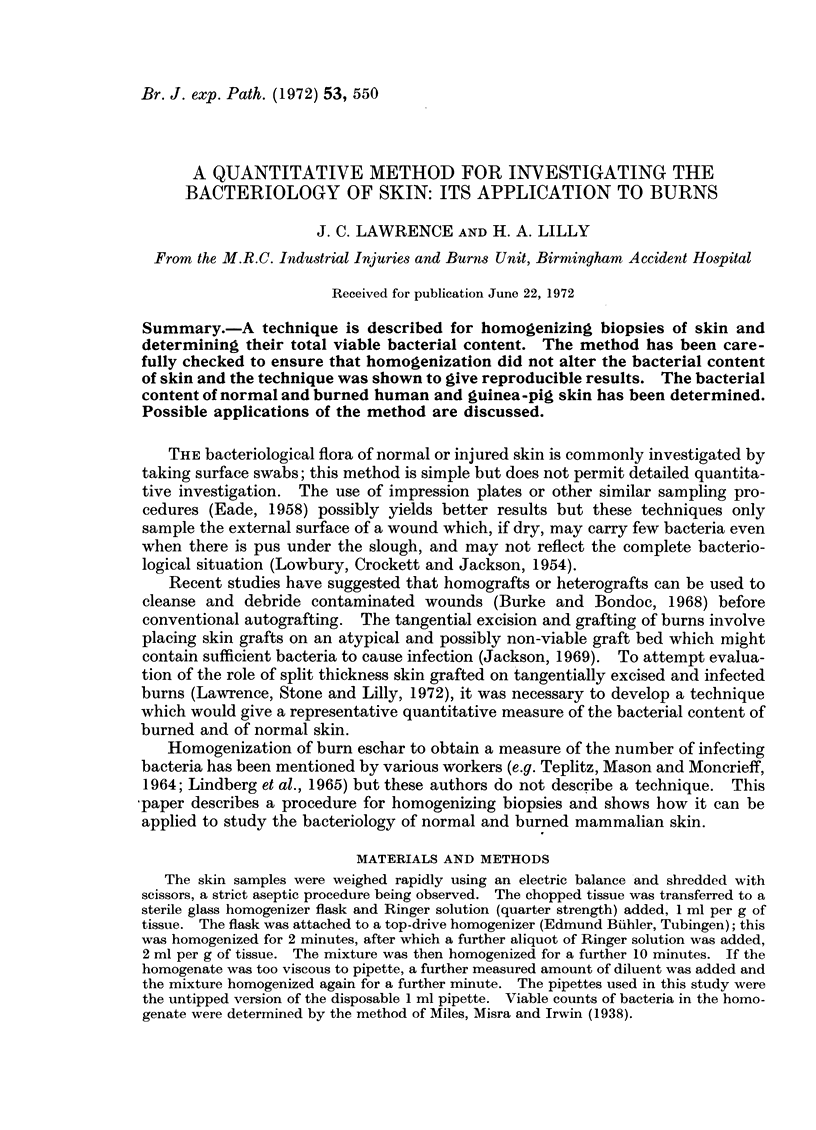
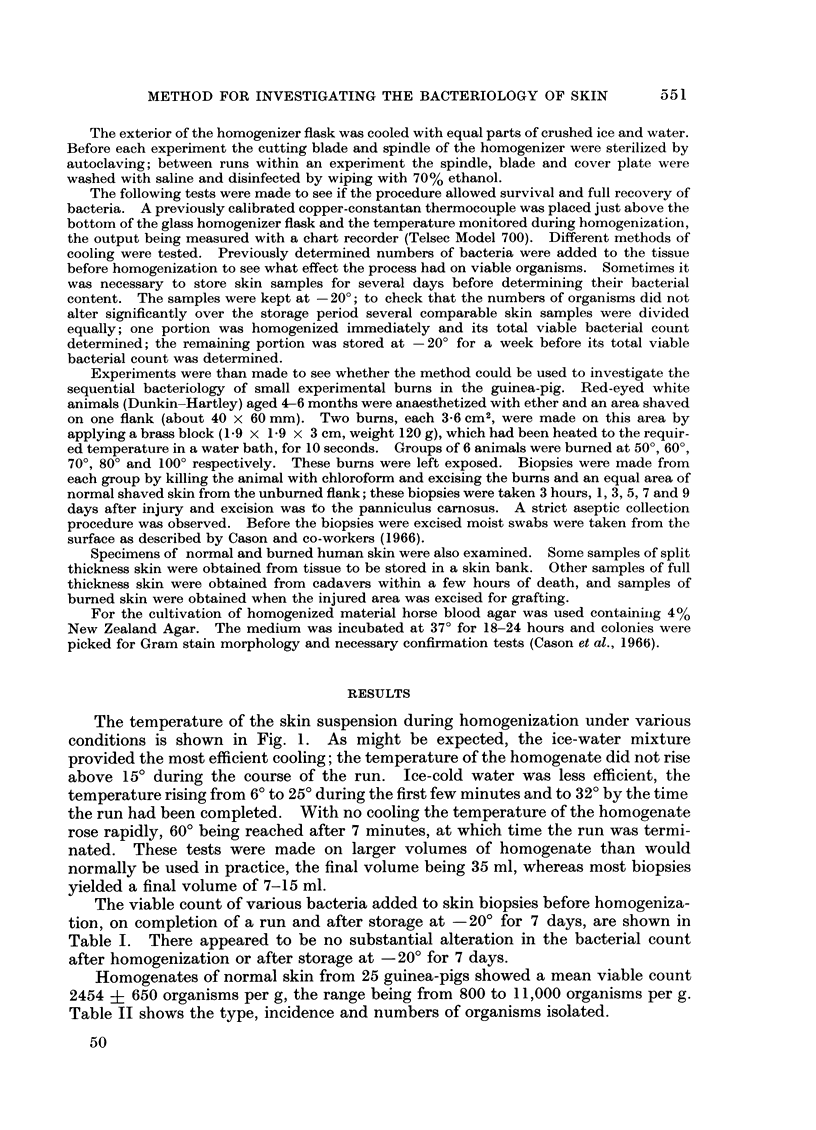
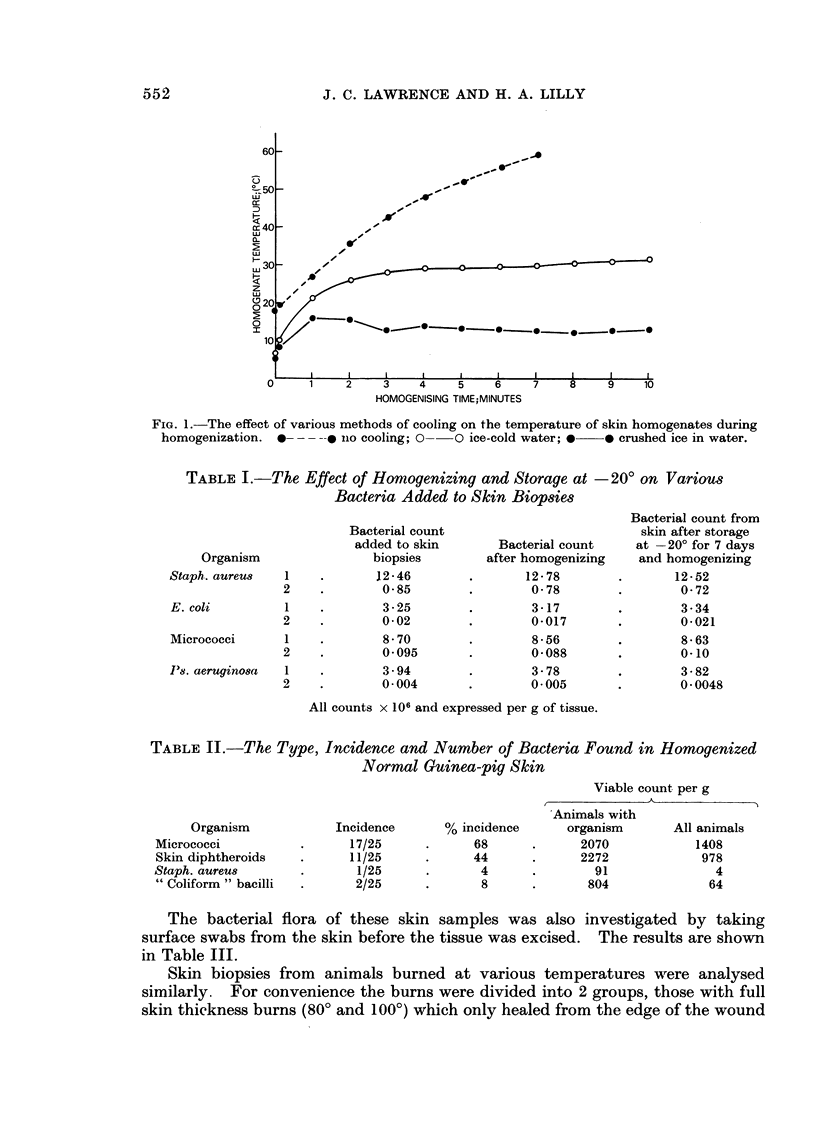
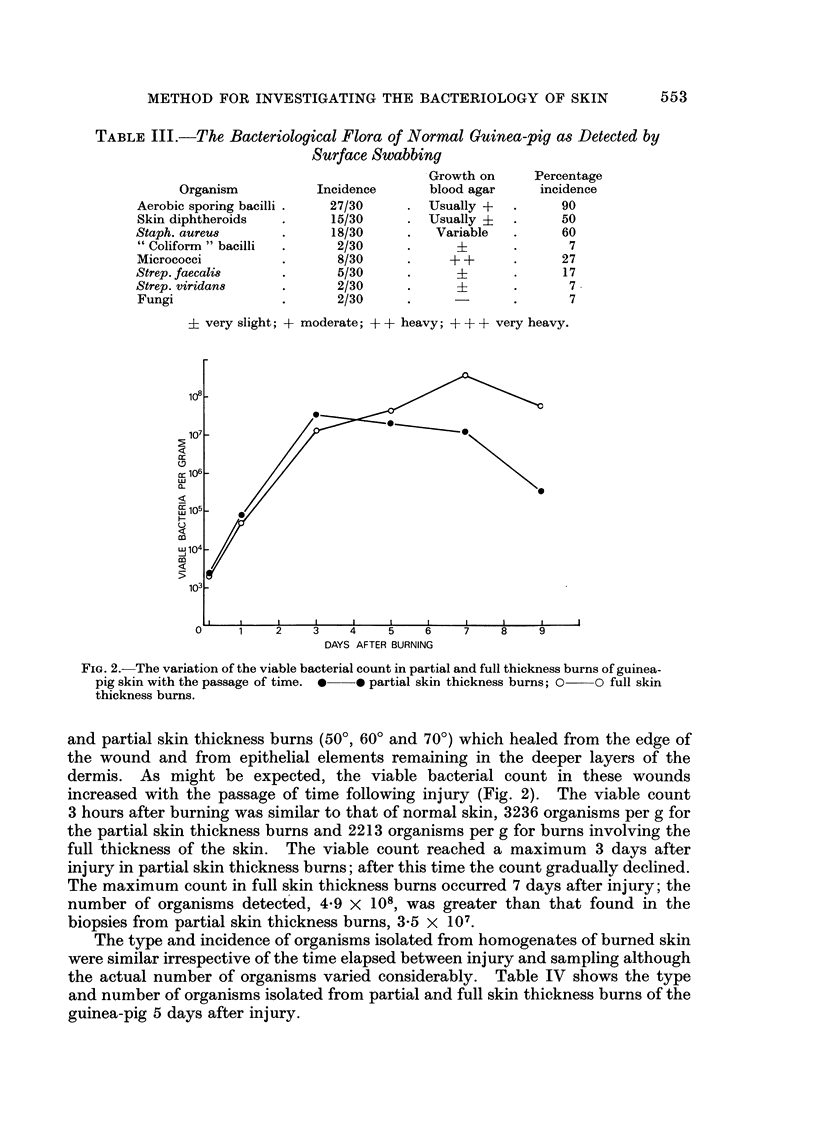


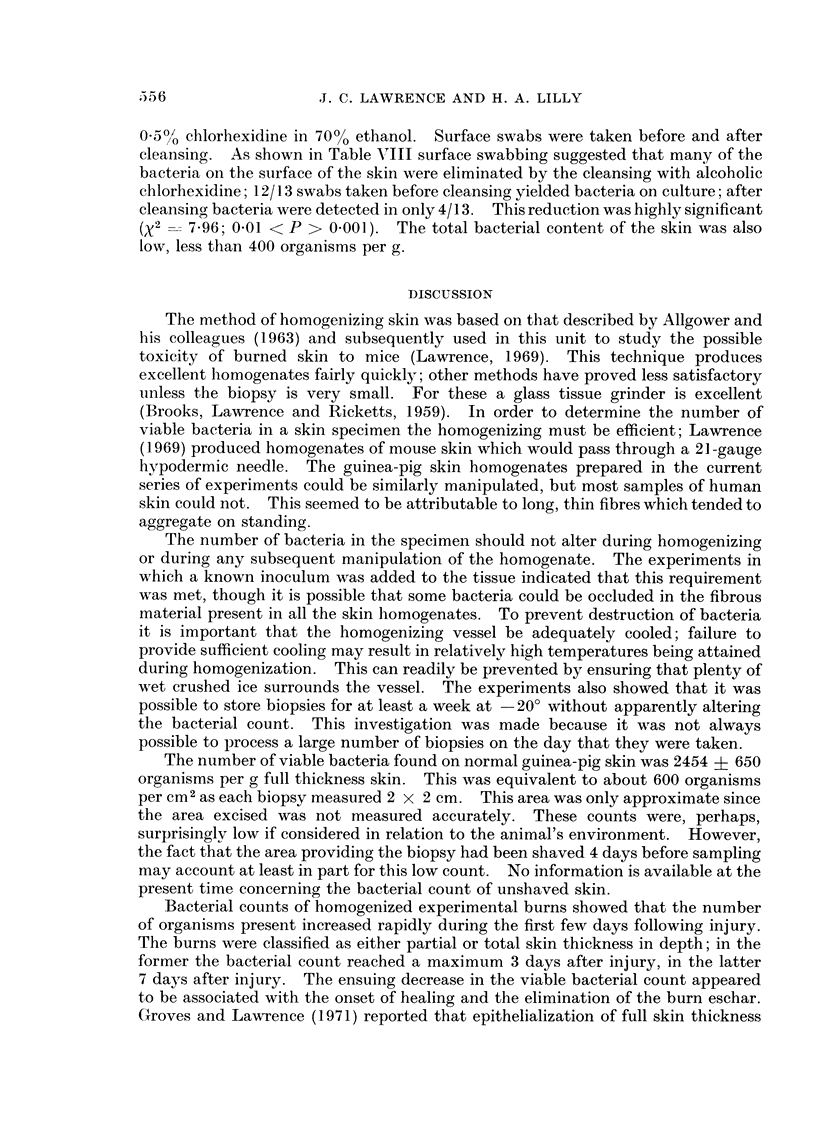
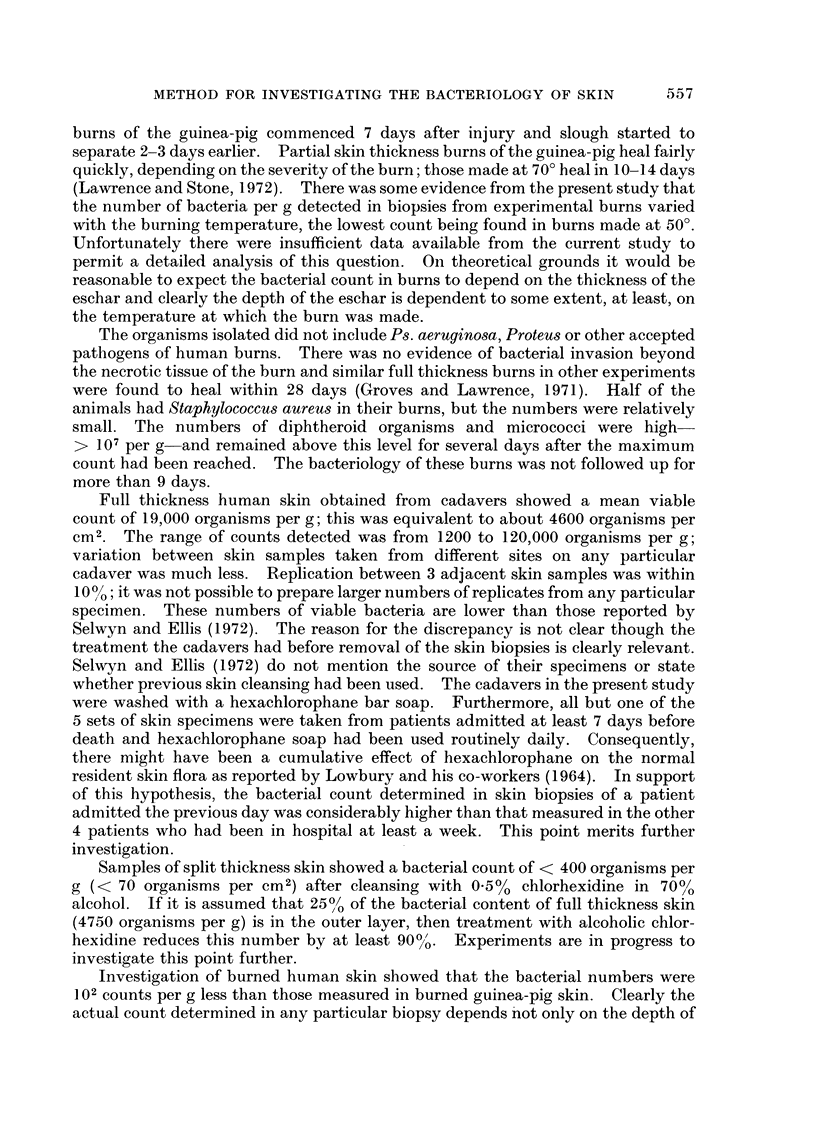
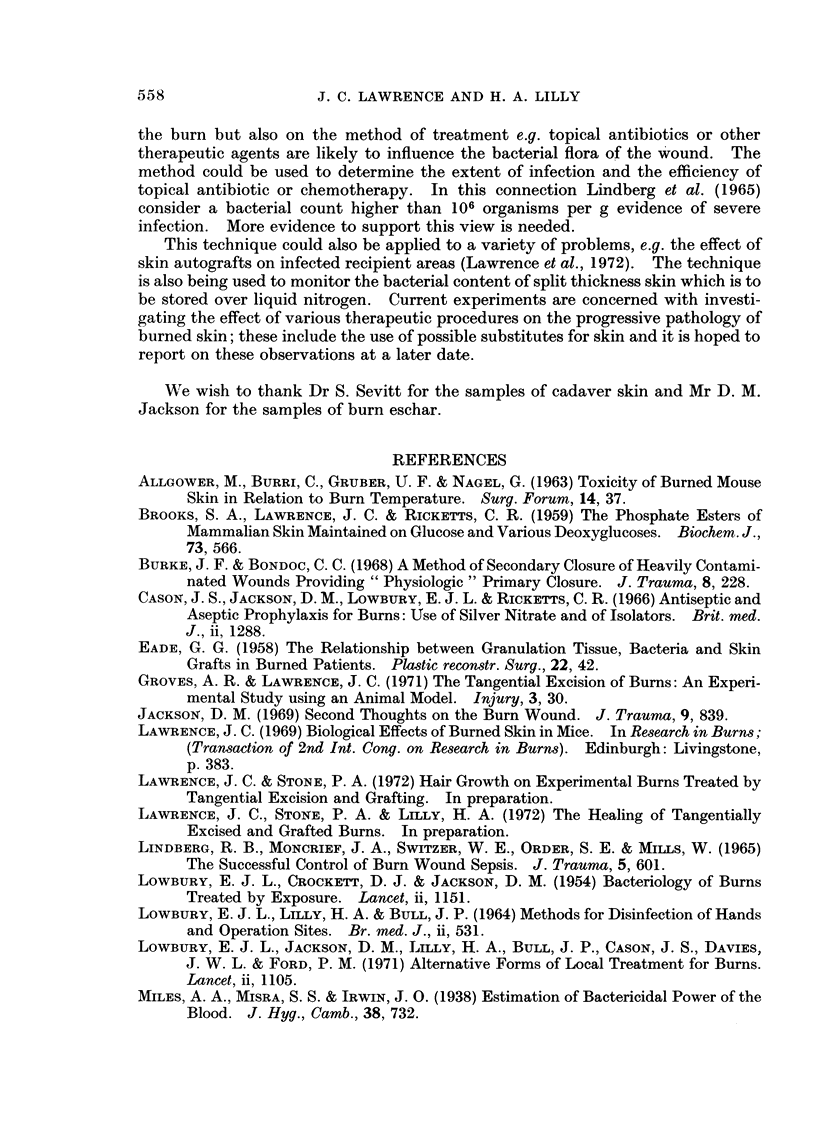

Selected References
These references are in PubMed. This may not be the complete list of references from this article.
- ALLGOEWER M., BURRI C., GRUBER U. F., NAGEL G. TOXICITY OF BURNED MOUSE SKIN IN RELATION TO BURN TEMPERATURE. Surg Forum. 1963;14:37–39. [PubMed] [Google Scholar]
- BROOKS S. A., LAWRENCE J. C., RICKETTS C. R. The phosphate esters of mammalian skin maintained on glucose and various deoxyglucoses. Biochem J. 1959 Dec;73:566–572. doi: 10.1042/bj0730566. [DOI] [PMC free article] [PubMed] [Google Scholar]
- Burke J. F., Bondoc C. C. A method of secondary closure of heavily contaminated wounds proividing "physiologic primary closure". J Trauma. 1968 Mar;8(2):228–237. [PubMed] [Google Scholar]
- Cason J. S., Jackson D. M., Lowbury E. J., Ricketts C. R. Antiseptic and aseptic prophylaxis for burns: use of silver nitrate and of isolators. Br Med J. 1966 Nov 26;2(5525):1288–1294. doi: 10.1136/bmj.2.5525.1288. [DOI] [PMC free article] [PubMed] [Google Scholar]
- EADE G. G. The relationship between granulation tissue, bacteria, and skin grafts in burned patients. Plast Reconstr Surg Transplant Bull. 1958 Jul;22(1):42–55. doi: 10.1097/00006534-195807000-00004. [DOI] [PubMed] [Google Scholar]
- Groves A. R., Lawrence J. C. The tangential excision of burns: an experimental study using an animal model. Injury. 1971 Jul;3(1):30–39. doi: 10.1016/s0020-1383(71)80133-x. [DOI] [PubMed] [Google Scholar]
- Jackson D. M. Second thoughts on the burn wound. J Trauma. 1969 Oct;9(10):839–862. doi: 10.1097/00005373-196910000-00003. [DOI] [PubMed] [Google Scholar]
- LOWBURY E. J., CROCKETT D. J., JACKSON D. M. Bacteriology of burns treated by exposure. Lancet. 1954 Dec 4;267(6849):1151–1153. doi: 10.1016/s0140-6736(54)91987-x. [DOI] [PubMed] [Google Scholar]
- LOWBURY E. J., LILLY H. A., BULL J. P. METHODS FOR DISINFECTION OF HANDS AND OPERATION SITES. Br Med J. 1964 Aug 29;2(5408):531–536. doi: 10.1136/bmj.2.5408.531. [DOI] [PMC free article] [PubMed] [Google Scholar]
- Lindberg R. B., Moncrief J. A., Switzer W. E., Order S. E., Mills W., Jr The successful control of burn wound sepsis. J Trauma. 1965 Sep;5(5):601–616. doi: 10.1097/00005373-196509000-00004. [DOI] [PubMed] [Google Scholar]
- Lowbury E. J., Lilly H. A., Cason J. S., Jackson D. M., Bull J. P., Davies J. W., Ford P. M. Alternative forms of local treatment for burns. Lancet. 1971 Nov 20;2(7734):1105–1111. doi: 10.1016/s0140-6736(71)91269-4. [DOI] [PubMed] [Google Scholar]
- Selwyn S., Ellis H. Skin bacteria and skin disinfection reconsidered. Br Med J. 1972 Jan 15;1(5793):136–140. doi: 10.1136/bmj.1.5793.136. [DOI] [PMC free article] [PubMed] [Google Scholar]
- TEPLITZ C., DAVIS D., MASON A. D., Jr, MONCRIEF J. A. PSEUDOMONAS BURN WOUND SEPSIS. I PATHOGENESIS OF EXPERIMENTAL PSEUDOMONAS BURN WOUND SEPSIS. J Surg Res. 1964 May;4:200–216. doi: 10.1016/s0022-4804(64)80026-3. [DOI] [PubMed] [Google Scholar]


